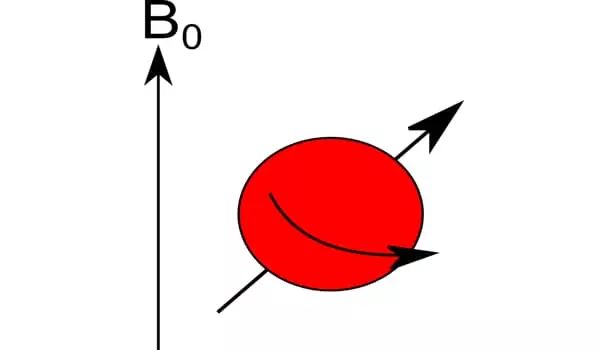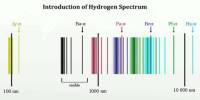Magnetism is a property of matter caused by electrons orbiting in atoms. Because of the orbiting electrons, the atoms have a magnetic moment associated with an intrinsic angular momentum known as spin. Spin will be discussed in greater depth further down. It’s easier to visualize the electron spinning on its axis with up and down orientations. In reality, however, the electron is not physically spinning!
The magnetic field in an MRI scanner is created by surrounding a coil of wire with supercooling fluids (liquid helium and liquid nitrogen), which reduces the temperature to about 10°K (-263°C or -441°F). The electrical current in the coil moves very quickly, producing an extremely large magnetic field.
Researchers have shown a proof-of-concept modification that allows standard MRI systems to detect frequencies associated with the presence of sodium-23 ions. This low-cost and convenient approach necessitates the installation of a radio-frequency repeater inside an MRI machine’s magnetic bore. The wide applicability of this method for sodium and other nuclei may allow advanced medical imaging to be performed on existing machines, significantly lowering hospital MRI scanner upgrade costs.
As a cost-effective upgrade, an RF repeater, which is commonly used in amateur radio, can be placed directly inside the magnet bore of an existing MRI machine. Observing the movement of sodium ions inside the body provides detailed metabolic information not available from conventional MRI images.
Professor Yasuhiko Terada
Using a cross-band radio-frequency repeater, researchers at the University of Tsukuba demonstrated how conventional magnetic resonance imaging (MRI) machines can be retrofitted to detect sodium ions. This work may enable new medical diagnostics to be performed without the need for costly new equipment.
Magnetic resonance imaging has evolved into an important part of the medical toolkit for the non-invasive visualization of internal organs. MRI machines work by exposing the patient to a very strong magnetic field, causing the nuclear spins of atoms in the body to align in the same direction, essentially acting as tiny magnets. Then, a radio-frequency (RF) signal of a very specific frequency is applied, which has the ability to reverse the spins’ direction. When the nuclei return to their original aligned state, the precession of these spins about the magnetic field direction can be measured by RF detector coils to determine the concentration of that specific atom.
The vast majority of MRI machines in use today are programmed to detect the presence of hydrogen (1H) nuclei, which are naturally abundant in the body as a component of water molecules. Retrofitting such a machine to detect other isotopes, such as sodium-23 23Na, would necessitate significant hardware upgrades.

A team of researchers from the University of Tsukuba has now demonstrated a proof-of-concept method for equipping a standard MRI machine with the ability to image 23Na by installing a cross-band RF repeater system. This is a device that receives signals at one frequency and rebroadcasts them at another. “As a cost-effective upgrade, an RF repeater, which is commonly used in amateur radio, can be placed directly inside the magnet bore of an existing MRI machine,” explains author Professor Yasuhiko Terada. This enables the frequency produced by 23Na, which is approximately 17 MHz, to be detected by MRI coils tuned at 64 MHz.
A rotating object has a property known as angular momentum in classical physics. Angular momentum is a type of inertia that reflects the size, shape, mass, and rotational velocity of an object. It is commonly represented as a vector (L) pointing along the axis of rotation.
Spin is an intrinsic quantum mechanical property of elementary particles. It’s difficult to imagine this property, and the concept of actual rotation can be useful. However, it is prudent to distinguish this concept of a spinning particle from the quantum mechanical property known as spin. Although spin is a type of angular momentum, having a spin on an elementary particle does not imply that it is rotating; particles with spin simply have spin. Although an electron has mass, it is designated as a “point particle,” occupying no volume of space at all.
The system was tested using a saline “phantom” and an anesthetized mouse. Even though the resulting signal was significantly lower than that of custom-built 23Na machines, it could be amplified to produce comparable images. “Observing the movement of sodium ions inside the body provides detailed metabolic information not available from conventional MRI images,” says Professor Terada. Because of its high sodium concentration, 23Na imaging has already been shown to be useful for applications involving the kidney, as well as the brain and heart. This approach has the potential to significantly reduce healthcare costs by adding completely new capabilities to existing machines without requiring a complete overhaul.
















